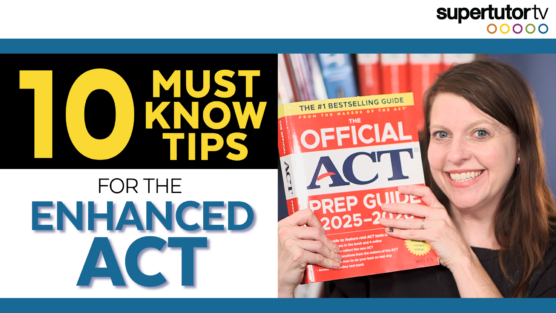Do you want to know what it takes to get a perfect score on the SAT writing section? Read on to get tips from a tutor who scored 1600 on her SAT.
Know Your Grammar Basics
Our first tip for getting a perfect score on the SAT writing section is to know your grammar rules backward and forwards. It’s not enough to simply know what sounds good. You need to know the rules and understand what each question is asking. For example, if each answer choice has a verb in it, you know they’re probably testing for something like verb forms or tenses. You should look through each question and determine what grammar rule is at play.
If you need help learning grammar basics, our online course has resources to help you understand your mistakes and formulate a personalized action plan.
Style
Things like diction, idiomatic usage, clarity, and comparisons may be harder to master because the rules change slightly every time. With diction, for example, every word has a context where it’s appropriate, but others where it’s not. In these cases, simply learning a general rule will not help you answer the question to the correct specificity.
When answering a writing question, you may think it best to follow the rule that shorter is better. While this may sometimes be the case, the SAT places more importance on clarity and precision. For example, the shortest answer may be redundant and say the same thing twice. You also have to pay attention to context. An answer choice may include a synonym that can replace the question, but it doesn’t make sense when you read it in context. In the video, Brooke explains how the word “acquisition” can’t be used to replace the word “borrowing.” This is because an acquisition implies something bought as opposed to free. Knowing precise vocabulary will help you with these questions.
Rhetorical Strategy
Some of the trickiest questions on the SAT writing section have to do with finesse. What should you keep or delete in a sentence, and what’s the best placement for a specific word or phrase? Simply knowing your grammar rules might not be enough to help solve these. These types of questions come down to you understanding the meaning and what logically works the best.
When dealing with a paragraph placement or transition question you need to read the whole paragraph at play. You may even need to skim the paragraphs before and after the one in question. You need a total overview of what’s going on. In the video example, Brooke makes a point of reading the topic sentence of each paragraph and figuring out the thesis of the passage. She also pays attention to the answer choices. If most answer choices focus on one aspect of the piece, in this case, it is the data, then you should make a point to focus on how the data is presented. Does the sentence in question add context to this data? This will help you narrow down your answer choices.




